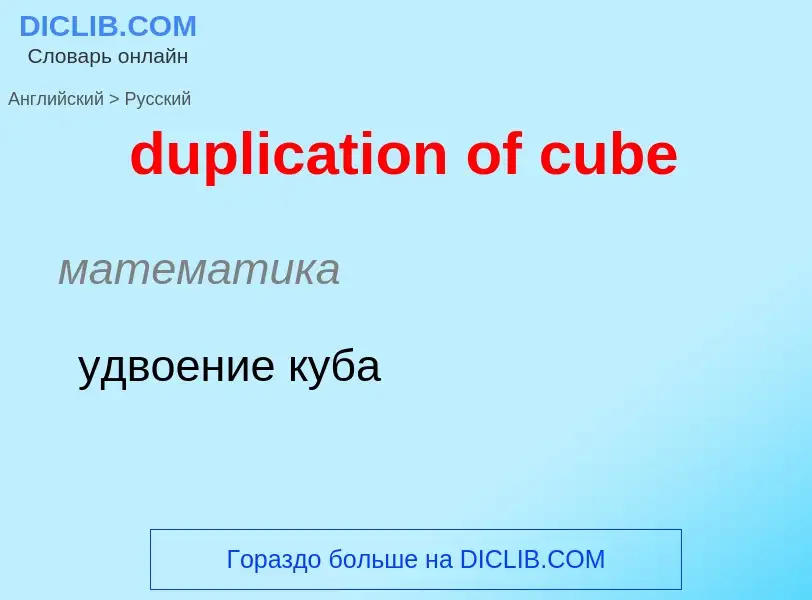Vertaling en analyse van woorden door kunstmatige intelligentie ChatGPT
Op deze pagina kunt u een gedetailleerde analyse krijgen van een woord of zin, geproduceerd met behulp van de beste kunstmatige intelligentietechnologie tot nu toe:
- hoe het woord wordt gebruikt
- gebruiksfrequentie
- het wordt vaker gebruikt in mondelinge of schriftelijke toespraken
- opties voor woordvertaling
- Gebruiksvoorbeelden (meerdere zinnen met vertaling)
- etymologie
duplication of cube - vertaling naar russisch
математика
удвоение куба
общая лексика
тандемные дупликации
Definitie
.
Wikipedia
Doubling the cube, also known as the Delian problem, is an ancient: 9 geometric problem. Given the edge of a cube, the problem requires the construction of the edge of a second cube whose volume is double that of the first. As with the related problems of squaring the circle and trisecting the angle, doubling the cube is now known to be impossible to construct by using only a compass and straightedge, but even in ancient times solutions were known that employed other tools.
The Egyptians, Indians, and particularly the Greeks were aware of the problem and made many futile attempts at solving what they saw as an obstinate but soluble problem. However, the nonexistence of a compass-and-straightedge solution was finally proven by Pierre Wantzel in 1837.
In algebraic terms, doubling a unit cube requires the construction of a line segment of length x, where x3 = 2; in other words, x = , the cube root of two. This is because a cube of side length 1 has a volume of 13 = 1, and a cube of twice that volume (a volume of 2) has a side length of the cube root of 2. The impossibility of doubling the cube is therefore equivalent to the statement that is not a constructible number. This is a consequence of the fact that the coordinates of a new point constructed by a compass and straightedge are roots of polynomials over the field generated by the coordinates of previous points, of no greater degree than a quadratic. This implies that the degree of the field extension generated by a constructible point must be a power of 2. The field extension generated by , however, is of degree 3.


